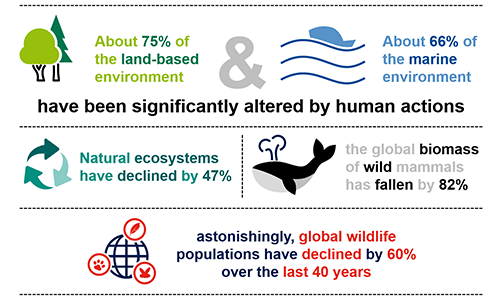In the wake of the enormous challenges posed by climate change, preserving and reversing biodiversity loss is becoming an increasingly pressing issue. Investors need to be aware of the opportunities and risks involved.
By Daniel Lurch, Portfolio Manager and Joëlle Amram, Investment Specialist
Sustainable Equities, J. Safra Sarasin Sustainable Asset Management
Why has Biodiversity emerged as such an important theme in sustainable finance?
Acting against biodiversity loss means preventing the collapse of nature’s sub-systems, on which we depend. We are highly dependent on nature’s ecosystem. The OECD estimates that ecosystem services are worth $125-140 trillion per annum to society, equivalent to ~1.5x global GDP.
More importantly, life itself depends on them. The problem is that biodiversity loss is accelerating at an alarming rate. We are now living in a new geological age, the Anthropocene, the «age of humans». For the first time, we are the defining feature of our planet.
Biodiversity is under threat (click graphic to enlarge)
Source: Bank J. Safra Sarasin Ltd, WWF, IPBES, November 2021
What risks could investors be exposed to through biodiversity loss in their portfolio?
Like climate change, we can break down risks into two main categories: physical and transition risks. Some industries such as tourism, agriculture, forest and fisheries are more exposed to physical risk resulting from biodiversity loss. Transition risks impact industries like logging, mining, intensive livestock farming, infrastructure, transport and plastics. These are exposed to reputational, regulatory or litigation risks should they fail to prevent the destruction of biodiversity.
How can we turn these risks into opportunities for investors to protect biodiversity?
Biodiversity loss is becoming an increasingly important topic in the financial world. Progress in technology, societal and government awareness presents many opportunities for investors to identify winners in this shift to a greener future.
Companies with biodiversity-friendly businesses, which provide innovative solutions, offer compelling investment opportunities. Investors can play an important role in reversing biodiversity loss and preserving ecosystems by actively investing in companies that provide solutions to these challenges.
So how do you invest in biodiversity?
We break down investment opportunities that support biodiversity into four main themes: ecosystem protection, future energies, resource efficiency and smart mobility. We then identify companies that are active in these spaces, as «pure-players» and «early-stage» businesses.
An exciting pure-player in hydrogen propulsion is PowerCell Sweden1. The Swedish manufacturer of fuel cell stacks was spun off from Volvo in 2008. Their fuel cells stand out for their compactness and rapid start-up times. A fuel cell converts chemical energy directly into electrical energy, powered by hydrogen, pure or reformed, and produces electricity and heat with no emissions other than water.
How the fuel cell works (click graphic to enlarge)
Source: PowerCell Sweden, Bank J. Safra Sarasin AG, 18.11.2021
PowerCell Sweden1) is just one exciting investment opportunity that operates in a niche market. We believe that constructing a well-diversified portfolio that is actively managed is the best way to benefit from the green revolution.
What other tools or guidance are available to help investors identify risks and opportunities around biodiversity?
Regulators are increasingly stepping in to aid investors. One significant development is the EU Taxonomy for identifying green economic activity to facilitate the EU’s commitments to the Paris Agreement and the UN Sustainable Development goals (SDGs). According to the UN PRI, over 80 percent of the SDGs depend on biodiversity.
Join Bank J. Safra Sarasin in investing in the future of our planet and in promoting innovation and growth of sustainable solutions.
|
For more exciting insights on biodiversity and related investment opportunities, check out our latest Investment Spotlight. Download report |
- Visit J. Safra Sarasin Sustainable Asset Management for more sustainability insights.
1 The companies presented are provided as investment examples and might not be part of the investment portfolio of the fund. The example is given for illustrative purposes only and does not account for individual circumstances of potential investors.













